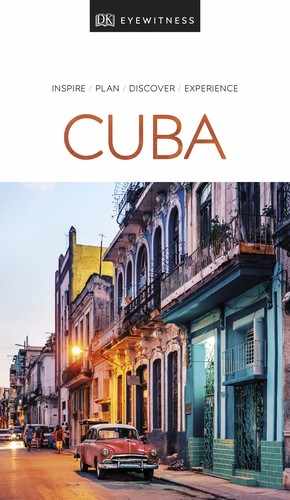g Western Cuba g Contents
experience more
The town of Soroa lies 250 m (820 ft) above sea level in the middle of tropical forest in the Sierra del Rosario region. It was named after two Basque brothers, Lorenzo and Antonio Soroa Muñagorri, who, in around 1856, bought various coffee plantations in the area and soon became the proprietors of the entire territory. One of the estates in the valley, Finca Angerona, was in the 19th century the setting for a legendary love story involving the French-German Cornelius Sausse, who built the farm in 1813, and a Haitian girl, Ursule Lambert.
Soroa, today, is a small town with a hotel (Villa Soroa) and a number of tourist attractions. The most photographed is the Saltón, a spectacular waterfall on the Manantiales river, a 20-minute walk from the Villa Soroa. But the major sight here is the Orquideario de Soroa, an orchid garden which has been declared a national monument. It has one of the largest orchid collections in the world, with more than 700 species, 250 of which are endemic, in an area of 350 sq km (135 sq miles). The park, often visited by Hemingway, was founded in 1943 by a lawyer from the Canaries, Tomás Felipe Camacho. He had orchids sent here from all over the world in memory of his daughter, who had died at the age of 20 during childbirth, and his wife, who died shortly after.
Outside the town is the Castillo de las Nubes, a medieval-like construction built in 1940 for Antonio Arturo Sánchez Bustamante, the landowner of this area. The Castillo is a noted viewpoint, worth visiting for the marvellous views over the Sierra del Rosario alone.

t Bathers cooling off in the cascading Saltón waterfall near Soroa
Orquideario de Soroa
" ⌂ Carretera de Soroa Km 8 § (48) 523 871 # 8:30am–4:30pm daily
Experience Western Cuba
|
eat La Fonda de Mercedes This family-run restaurant serves traditional criolla meals, including delicious ajiaco stew. ! C1 ⌂ Unit 9, Las Terrazas § (48) 578 676 \ El Galeón Choose to sit on the shaded patio or on the pirate-themed rooftop. The grilled snapper is recommended. ! C3 ⌂ Calle 24 4510, Nueva Gerona, Isla de la Juventud § (46) 509 128 \ |
This peaceful village on the slopes of the Sierra de los Quemados, about 5 km (3 miles) east of the Parque Nacional La Güira, was a major tourist and therapeutic centre a century ago. The thermal springs in the area, with their sulphurous water, were said to help cure rheumatism and skin diseases. It was promoted to US visitors as a “Saratoga in the Tropics” – a town near New York famed for its springs. Unfortunately the spa has been closed for several years, but the village retains a faded colonial charm. The peaceful plaza and Hotel Saratoga recall the town’s erstwhile grandeur.
Did You Know?
Che Guevara wanted an altruistic society in which money could be eliminated.
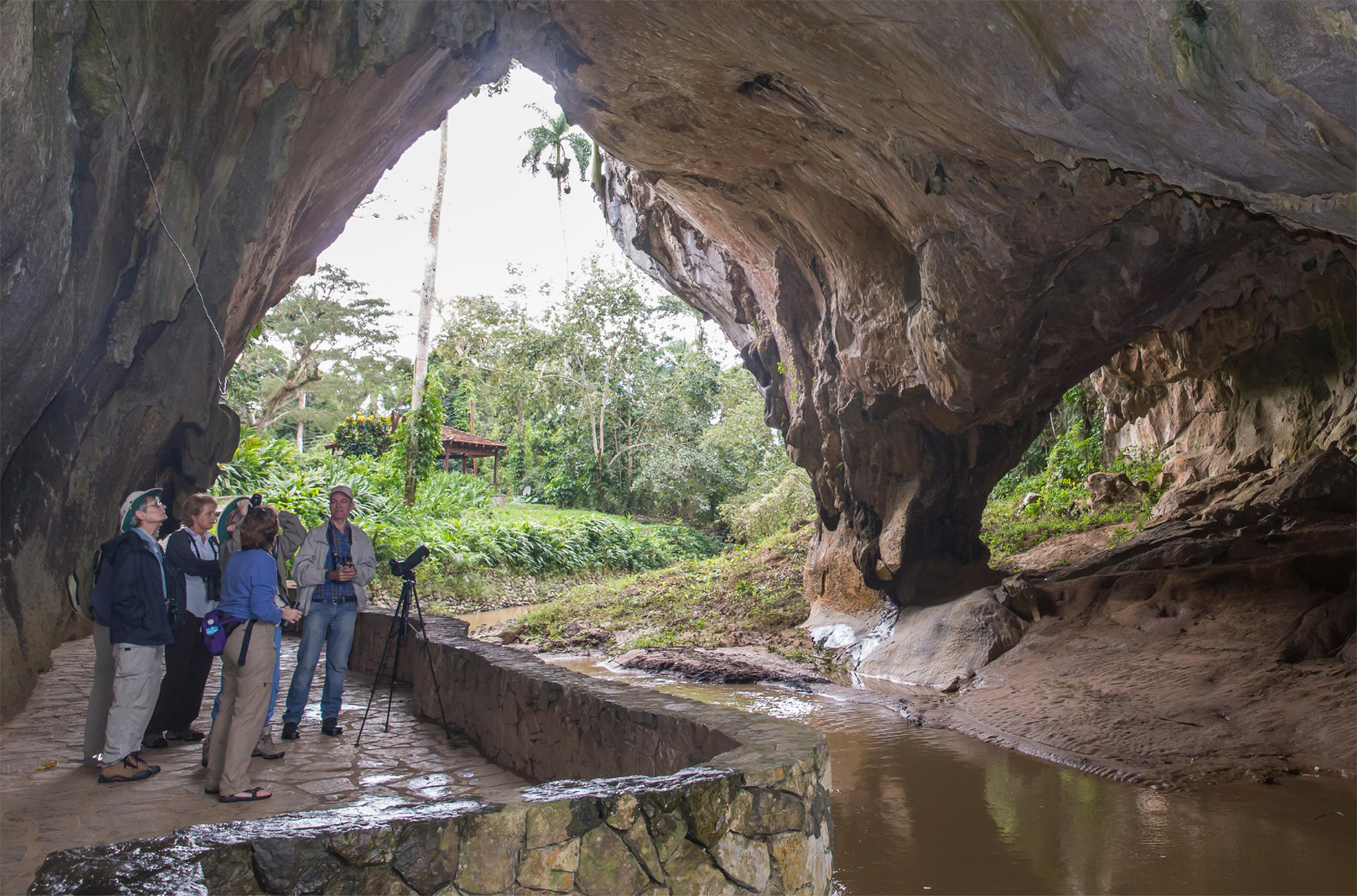
t Admiring the Cueva de los Portales, in the Parque Nacional La Güira
Prior to the revolution, the rugged, remote and heavily forested 219 sq km (85 sq miles) that make up the Parque Nacional La Güira was one of the largest agricultural estates in the province of Pinar del Río. At its heart lies the landscaped grounds and former residence of the landowner Juan Manuel Cortina, a successful lawyer and notable politician. This was one of the first properties to be nationalized after Castro’s rebel army seized power, forcing Cortina to flee Cuba in 1959 on charges of worker exploitation. He ended his days in Miami, where he died in 1970. His estate, Hacienda Cortina, is entered via mock medieval fortress gates. Though it lay derelict for many years, the estate is still in fairly good shape and includes the ruins of a medieval-style residence and an English garden with bronze lions, a small Chinese temple and Carrara marble statues of mythological figures including sphinxes and satyrs.
At the western edge of the park, but not accessible via Hacienda Cortina, is the Cueva de los Portales, a massive cavern in a mogote that was created by the Río Caiguanabo. Soaring to some 30 m (96 ft), this remote sanctuary was used by indigenous people as a refuge from the massacres that were waged by the Spanish in the early 16th century and swept through the island.
During the Cuban Missile Crisis of 1962, the cave became the headquarters of Che Guevara’s Western Army. Built against one of the interior walls, amid dramatic dripstone formations, the room where Guevara had his office still contains his simple furniture. Note his narrow iron bed inside a natural recess in the rock wall. The site is a National Monument, and a guide will accompany your visit.
Cuban Missile Crisis
As a consequence of the failed Bay of Pigs invasion, President Kennedy became determined to eradicate Communism in Cuba. Concerned for the island’s security, Castro requested that the Soviets install nuclear missiles. As a result, Kennedy was pressured by military hotheads to attack Cuba, while Castro urged Khrushchev to launch a nuclear strike on the US. After a tense 13 days, Khrushchev agreed to withdraw the missiles and Kennedy conceded not to invade Cuba.
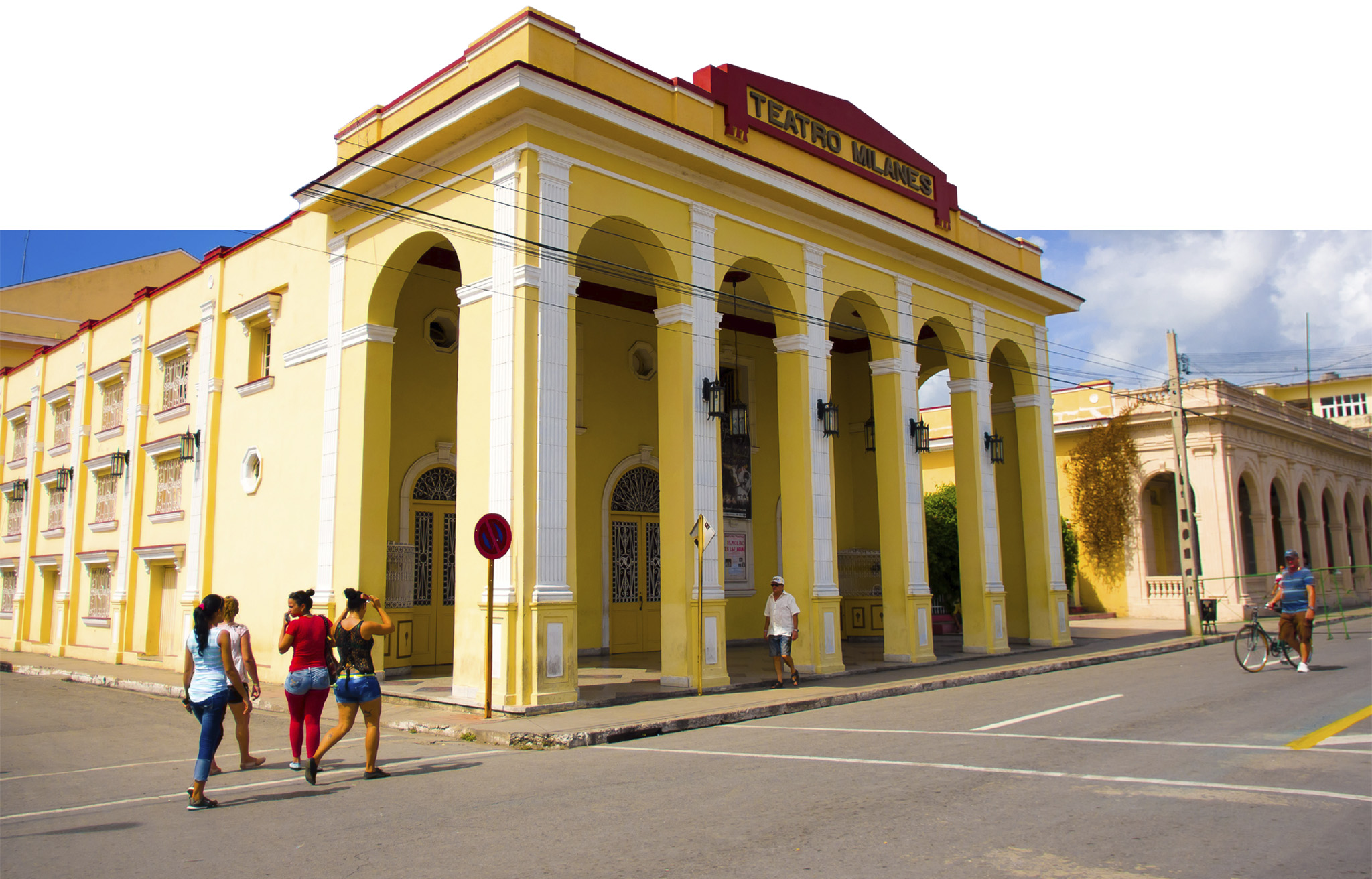
t The yellow, Neo-Classical exterior of the Teatro Milanés, Pinar del Río
In 1778, when the Cuban provinces were founded, the town of Nueva Filipina was renamed Pinar because of a pine grove in the vicinity, on the banks of the Guamá river. Nearby, General Antonio Maceo fought a number of battles in 1896–7 that were crucial to the Cubans’ victory in the third war of independence.
Today, the pines no longer grow here, but the clean air and colonial atmosphere of Pinar del Río are unchanged. The capital of the westernmost province in Cuba, the town can seem remote and old-fashioned. It has long been a centre for the cultivation and industrial processing of tobacco and is best utilized as a base for exploring the surrounding countryside. Although it is still largely untouched by hotel chains, the town does have numerous casas particulares. Watch out for jineteros, the aggressive touts who frequent the town offering accommodation help to travellers.
Pinar del Río is at its best in the carnival month of July and during November, when stages are set up through- out the city for the Nosotros festival and colourfully dressed performers on stilts loom over the streets.
The most striking aspect about the historic centre of this small, orderly and peaceful town is the abundance of columns: Corinthian or Ionic, simple or decorated. It’s easy to see from these architectural flourishes why Pinar del Río is known as the “city of capitals”.
The most important buildings lie on the arcaded main street, Calle Martí (also known as Calle Real). In the Cultural Heritage Fund shop, at the corner of Calle Rosario, visitors can buy local crafts as well as art reproductions. In the evening, the Casa de la Cultura (at No 125) hosts shows and concerts of traditional music such as punto guajiro (from guajiro, the Cuban word for farmer), which is performed by a group playing different kinds of guitar, and is generally characterized by improvisation.
At Nos 172, 174 and 176 in Calle Colón, there are three unusual buildings designed by Rogelio Pérez Cubillas, the city’s leading architect in the 1930s and 1940s.
The somewhat extravagant Palacio Guasch is a mixture of Moorish arches, Gothic spires and Baroque elements. It was built in 1909 for a wealthy physician who had travelled widely and who wanted to reproduce in his new residence the architectural styles that had impressed him the most. In 1979 the mansion was transformed into the Museo de Ciencias Naturales Sandalio de Noda (natural history museum) named after Tranquilino Sandalio de Nodas, a well-known land surveyor in this region. The museum illustrates the natural and geological history of Pinar and has on display stuffed birds and animals, including the tiny Cuban zunzún hummingbird and a crocodile that is more than 4 m (12 ft) long, as well as rare plants and butterflies. In the inner courtyard are sculptures of prehistoric animals.
The Museo Provincial de Historia illustrates the history of the province from the Pre-Columbian period to today. On display is a major collection of 19th-century arms, colonial furniture, works by local painters, including a huge landscape by Domingo Ramos (1955), and mementos of the musician Enrique Jorrín, the father of the cha-cha-cha.
A Neo-Classical gem and the city’s pride and joy, the Teatro Milanés is named after the romantic poet José Jacinto Milanés. It started out as the Lope de Vega theatre, which first opened in 1845 and was then bought in 1880 by one Félix del Pino Díaz. He totally renovated it, modelling it on the Teatro Sauto in Matanzas. Its name was changed in 1898. This simple but functional structure has a rectangular plan, a linear façade and a portico with tall columns. Its opulent, three-level, U-shaped wooden auditorium has a seating capacity of about 500.
Since 1892 the Fábrica de Guayabita Casa Garay has produced Guayabita del Pinar, a liqueur based on an ancient recipe. It is made by distilling brandy from the sugar of the guayaba (guava), which is grown in this area. Guided tours of the small factory finish up at the tasting area, where visitors can try the sweet and dry versions of this popular drink.
At the tiny Fábrica de Tabacos Francisco Donatién cigar factory, housed in a former 19th-century jail, visitors can watch the 70 or so workers making Trinidad cigars. These and other cigars are sold in the small shop. You can also visit the prestigious Finca El Pinar San Luis plantation, which is renowned among cigar connoisseurs.

t A farmer working in a leafy tobacco field near Pinar del Río
Museo de Ciencias Naturales Sandalio de Noda
" ⌂ Calle Martí 202, esq Comandante Pinares § (48) 779 483 # 9am–5pm Mon–Sat, 9am–noon Sun ¢ 1 Jan, 1 May, 26 Jul, 10 Oct, 25 Dec
Museo Provincial de Historia
" ' ⌂ Calle Martí 58 e/ Colón y Isabel Rubio § (48) 754 300 # 8am–10pm Tue–Sat, 8am–5pm Sun ¢ 1 Jan, 1 May, 26 Jul, 10 Oct, 25 Dec
Teatro Milanés
" ' ⌂ Calle Martí y Colón § (48) 753 871 # Ticket office: 8am–5pm Tue–Sat, 8am–noon Sun; show: 9pm Wed–Sat
Fábrica de Guayabita Casa Garay
' ⌂ Calle Isabel Rubio 189 e/ Ceferino Fernández y Frank País § (48) 752 966 # 9am–5pm Mon–Fri, 9am–noon Sat ¢ 1 Jan, 1 May, 26 Jul, 10 Oct, 25 Dec
Fábrica de Tabacos Francisco Donatién
" ' = ⌂ Antonio Maceo 157 § (48) 773 069 ¢ Closed for restoration at time of writing; call to check
Finca El Pinar San Luis
" ' ⌂ Calle Isabel Rubio § (48) 797 470 # 9am– 5pm daily

Insider Tip
Game Time
If visiting between November and April, check the local calendar to see if the Vegueros – Pinar del Río’s baseball team — is playing any games at the Estadio Capitán San Luis. Take a hat, water and snacks.Enjoy the game!
Experience Western Cuba
Cuban Tobacco
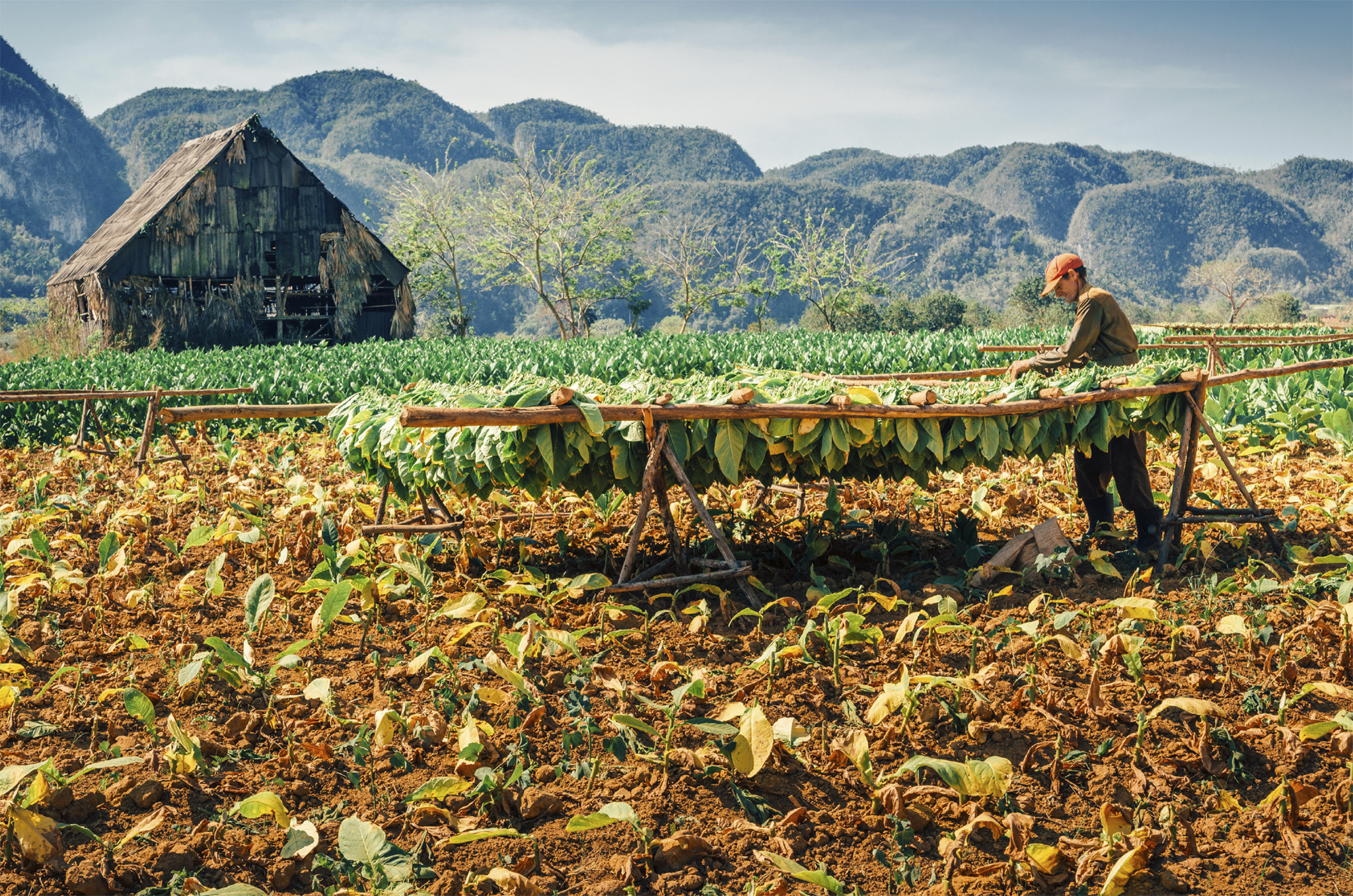
The tobacco plant (Nicotiana tabacum) grows from small, round, golden seeds. Cuban tobacco seeds are in demand throughout the world, because their quality is considered to be so good. The plant reaches its full height in the three or four months from November to February. Like cigar-making, tobacco growing is the result of age-old expertise handed down from generation to generation. Tobacco plants are quite delicate, and need skilful handling. There are two types: Corojo, grown in greenhouses, which has the prettiest leaves and is used as wrapper leaves for the cigars, and Criollo, which grows outdoors and provides the other leaves.
Did You Know?
Tabaco is a Taíno word used to describe leaves that are rolled into a tube and then smoked.
Under government protection so as to preserve this colonial settlement, the town of Viñales is full of amazing architecture. Founded in 1607, its name (vineyard) derived from the grape vines that were planted here by a settler from the Canary Islands and its economy has always been based on agriculture.
Viñales’s main street is lined with myriad colonial houses and their characteristic arcades are useful shelters from the hot sun and any sudden tropical rainstorms. The street is named after Salvador Cisneros Betancourt, a 19th-century nationalist who is notable for being one of the signatories of the 1869 Cuban constitution.
The town’s most important architecture can be seen around the main square, the Parque Martí, on which stand the Iglesia del Sagrado Corazón de Jesús – built in 1888 – and the former Colonia Española (the diplomatic headquarters of the Spanish gentry), which now serves as the town’s Casa de la Cultura.
Viñales also contains a minor architectural gem, the Casa de Don Tomás, which was built in 1887–8 for Gerardo Miel y Sainz, a rich merchant and agent for a shipping line. The building was blown down in the 2008 hurricane, but then rebuilt true to the original.
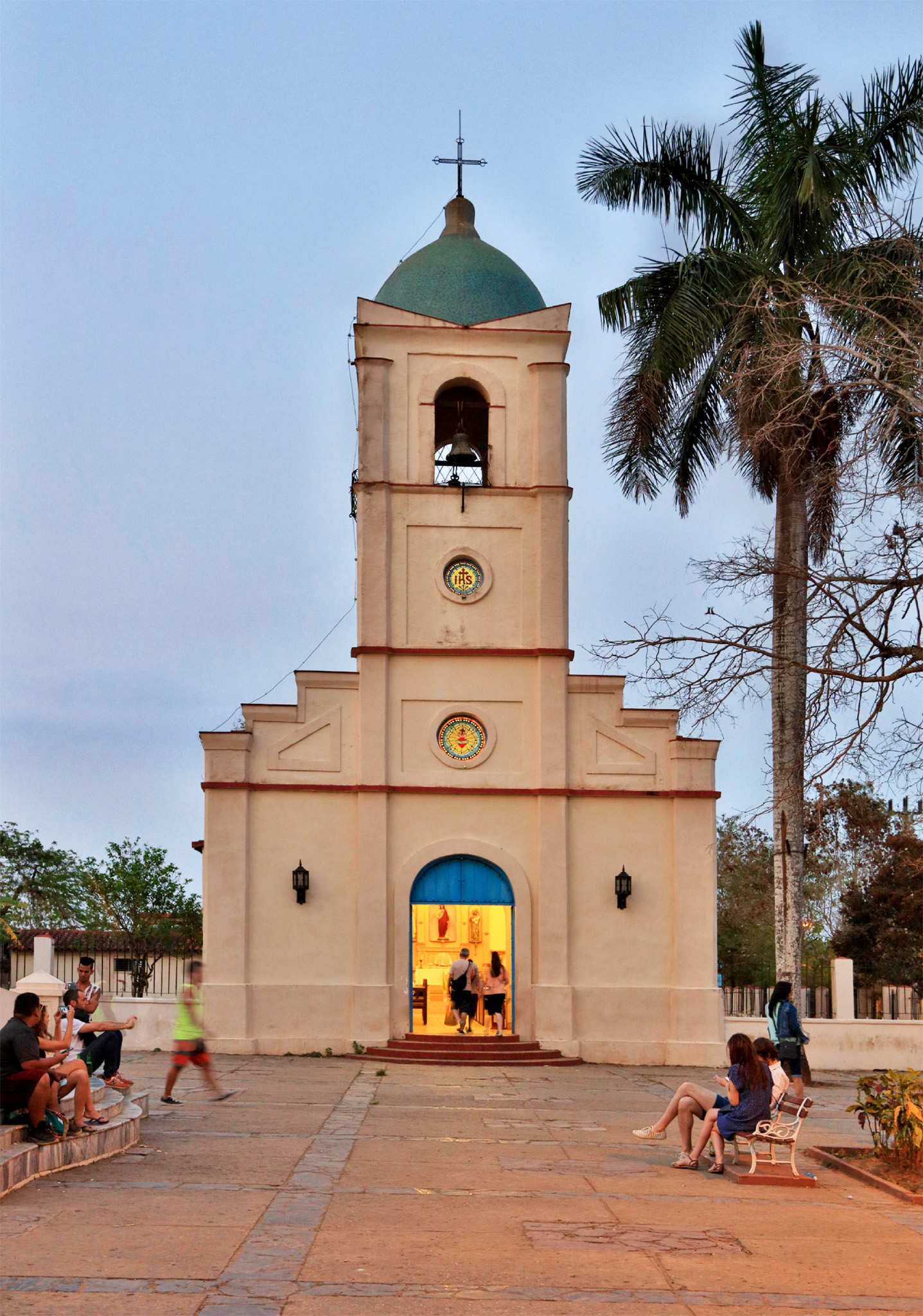
t The serene Iglesia del Sagrado Corazón de Jesus in the main square of Viñales
Casa de Don Tomás
⌂ Salvador Cisnero, e/ Adela Azcuz y Carratera a Pinar del Río § (48) 796 300

Picture Perfect
Roll Up
The tobacco plantations of Viñales and Vuelto Abajo offer superb photographic opportunities. Iconic images include ox-drawn ploughs framed by royal palms, guajiros (farm workers) in straw hats tending the verdant fields of tobacco plants and weathered torcederos (cigar-rollers) who skillfully demonstrate how to metamorphose mere leaves into the world’s finest cigars.
The small area between Pinar del Río, San Juan y Martínez and San Luís produces very high-quality tobacco. The good growing conditions here are the result of a series of factors – primarily the protection afforded by the Sierra del Rosario which shields the plants from heavy rainfall, and the fact that the sandy red soil in which the tobacco plants grow is well drained and rich in nitrogen. This is a unique environment; in fact, the former landowners who left Cuba in 1959 have tried in vain to reproduce the miracle in Nicaragua, Honduras, Santo Domingo and the US.
On the road from the provincial capital to San Juan y Martínez, the prestigious Hoyo de Monterrey plantations can be visited. Here plants are protected from the sun by cotton cloth to maintain the softness of the tobacco leaves. There are also curing houses, windowless storehouses where the leaves are left to dry on long poles.
This small island, with its white-sand beaches, an offshore coral reef and mangroves, is the most geared up for tourists in Los Colorados archipelago, and the only one with diving facilities. Despite this, it is still unspoiled and is home to several species of bird; the surrounding waters, too, have an abundance of fish.
For an authentic country experience, head to this ranch. Expropriated from wealthy landowner Antonio Ferro following the revolution, the 10 sq km (4 sq miles) of undulating, lake-studded countryside are located 10 km (6 miles) northwest of Pinar del Río town.
The farm – which is named after a species of fish that inhabits the lake – raises horses, rabbits and chickens. Watch the rodeo show, which takes place three times weekly, and take a tour by horse-drawn carriage or on horseback. You can also stay at the small boutique lodge that has an elegant restaurant.
|
stay Hotel Moka The spacious rooms at this airy hilltop hotel overlooking Las Terrazas have a colonial feel. ! C1 ⌂ Las Terrazas ∑ lasterrazas.cu \ Hotel Los Jazmines Although it does not make for the most luxurious stay, Hotel Los Jazmines’ lofty location is unbeatable. ! B2 ⌂ Carretera de Viñales Km 25 ∑ cubanacan.cu/en \ Cubanacán Cayo Levisa This state-run beachfront hotel offers three types of accommodation. Don’t miss out on the hotel’s extensive watersports programme. ! B1 ⌂ Cayo Levisa ∑ cubanacan.cu/en \ Casa Estudio del Arte Aliuska Run by ecologically minded artists, this lovely casa particular offers rooms in a rustic thatched cottage. ! C1 ⌂ Carretera Soroa Km 8.5, Soroa § (48) 598 116 \ |

t Scuba diver admiring brain coral and other marine life in the waters off María La Gorda
The best-known bathing spot on the southwestern coast owes its name to a sad legend. A few centuries ago, an overweight (gorda) girl named María was abducted by pirates on the Venezuelan coast, transported to Cuba, and then abandoned at this place. In order to survive, she was forced to sell herself to the many buccaneers who passed by this coast, and this section of shoreline still bears her moniker – María the Fat.
The extraordinarily beautiful coral reefs are richly populated by marine life including sea turtles, reef sharks and a number of other rare species of tropical fish. This makes these 8 km (5 miles) of coastline, with fine white sand and a warm, translucent sea, a real tropical aquarium. The reefs are also incredibly easy to reach, lying just a short distance from the shore. This means that you can see vibrant fish swimming around the coral from the shore; you don’t even need to get in the water.
From the jetty opposite the diving area, a twice-daily boat takes divers out to the various dive sites. Locations of particular interest include the so-called Black Coral Valley, which is a wall of coral over 100 m (328 ft) long, and the Salón de María, a sea cave which lies at a depth of 18 m (60 ft) and is the habitat of rare species of fish.

Great View
Road with a View
The 60-km- (37-mile-) long road from La Bajada, in the Parque Nacional Península de Guanahacabibes, to Cabo San Antonio is spectacularly scenic. The best section lies beyond Punta Holandés, where you emerge on a raised platform overlooking the azure sea.
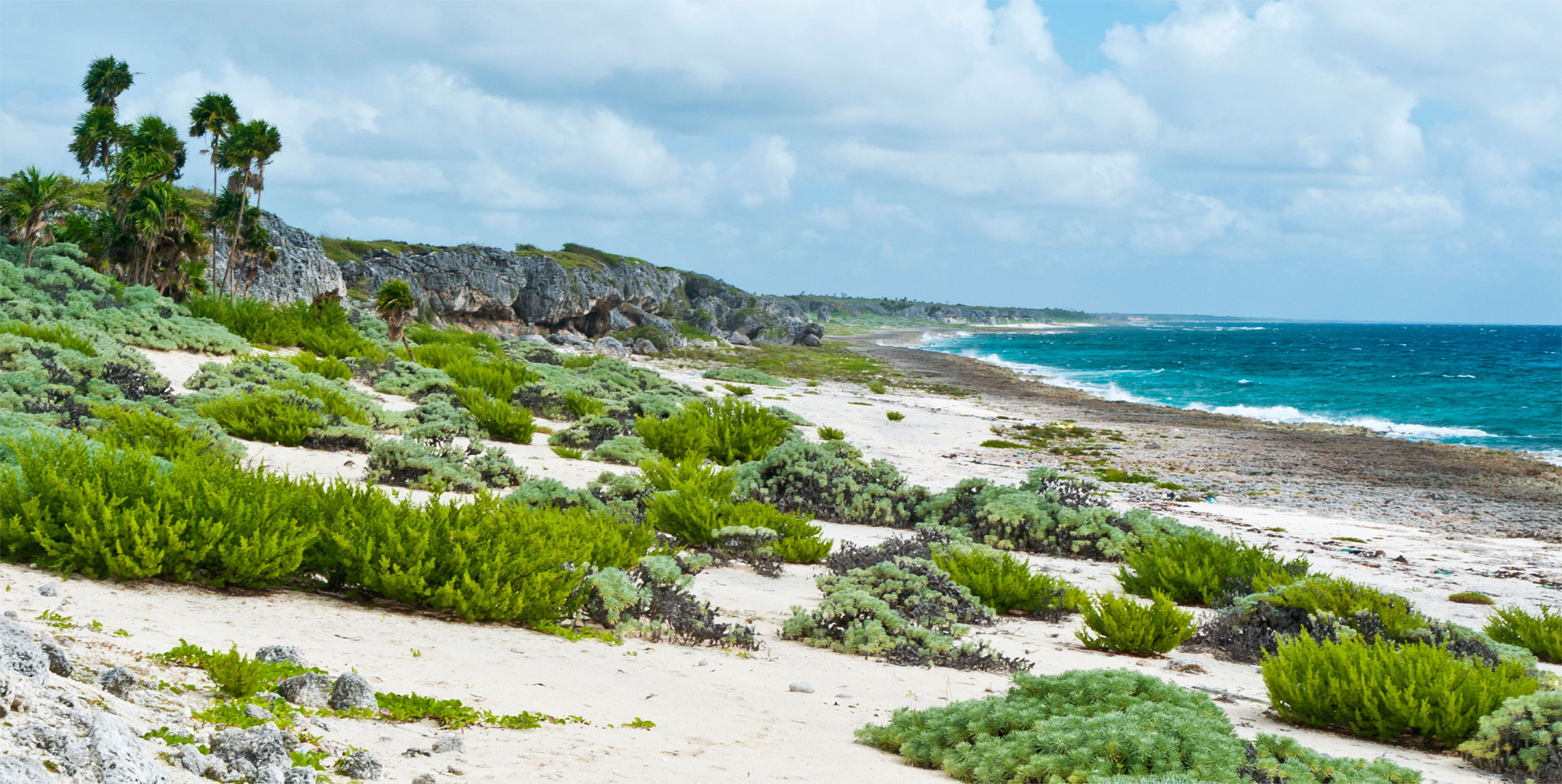
t A beach in the Parque Nacional Península de Guanahacabibes
Named after a Pre-Columbian ethnic group, this peninsula is a strip of land 100 km (62 miles) long and 6–34 km (4–21 miles) wide. In 1985 it was declared a world biosphere reserve by UNESCO, to protect the flora and fauna, so access to the inner zone is limited. Permission to visit is granted by the park rangers at La Bajada, and visitors use their own vehicles to get here, then proceed on foot with a local guide.
The mixed deciduous and evergreen forest has some 600 species of plants and many animals, including deer, boar, reptiles and jutías, opossum-like rodents that live in trees. Birds include woodpeckers, parrots, hummingbirds, cartacuba and tocororo.
Cabo San Antonio, Cuba’s western tip, is identifiable by the 23-m- (75-ft-) high Roncalli lighthouse, built in 1849 by the Spanish governor after whom it was named.
Did You Know?
In Cuba, you are never more than 80 km (50 miles) from the sea.
This 25-km- (15-mile-) long slender, low-lying wisp of an island is a wonderful holiday destination for those who love sun, sea and sand. Cayo Largo is semi-arid and lined along its southern shore by sand as white and fine as powdered sugar dissolving into shallow turquoise seas, perfect for snorkeling and wading. The most impressive beach is Playa Sirena, at the west end of the cay, while the few hotels on the island are concentrated along Playa Lindamar.
There are no inhabitants other than Cuban workers who live north of the airport in Combinado. Here you’ll find the marina and tourist office, as well as the Granja de las Tortuga (Turtle Breeding Centre), where eggs laid in the sands by green and leatherback turtles are hatched for release. Scuba-diving and fly-fishing excursions are offered, and you can sail to nearby Cayo Iguana, which is named after the endemic iguanas that live here.
Experience Western Cuba
|
Eat 3J Tapas Bar This hip bar-restaurant specializes in tapas, such as Spanish sausage and ravioli with spinach. ! B2 ⌂ Cisneros 5, Viñales § (48) 793 334 \ Paladar Buena Vista Enjoy sensational views over the valley from this rustic hilltop restaurant, serving criolla classics. ! B2 ⌂ Carretera de Viñales Km 25, Viñales § (53) 364 434 \ Finca Agroecológico El Paraíso Criolla dishes made with organic produce from the farm are on the menu at this hillside restaurant. ! B2 ⌂ Carretera al Cementerio Km 1.5, Viñales § (58) 188 581 \ |
